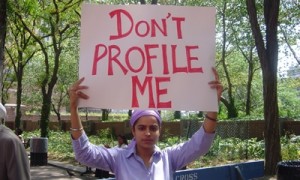
By now, you have surely been inundated with Facebook posts and discussions expressing excitement, amazement, or maybe skepticism about French designer Jean Paul Gaultier’s recent showcase of (non-Sikh) models wearing colorful “Sikh-style” turbans.
Gaultier has a thing for India, it seems. According to a recent news article, “The designer is known to visit the country quite often and owns a vast library of intensely coloured textile swatches here since his first visit to Kolkata in West Bengal and Puri in Orissa, in the 1970s.” In a recent interview, Gaultier said, “In every collection I have done, there is always an Indian inspiration.”

Over the last couple of weeks, I’ve been fascinated by the buzz about the turbaned models in Sikh circles and have been trying to figure out exactly how I feel about it and if I have anything useful to contribute to the conversation. I can’t promise this will be useful, but here are some thoughts and questions that have been swirling around in my head lately.
We Sikh men are not used to being seen as attractive or desirable through the lens of mass media. In Bollywood we are buffoons, in Hollywood we are nonexistent, save the English Patient and the occasional shoutout Waris Ahluwalia gets in the press. So yes, there is something amazing about seeing these models rocking turbans like they are the hottest accessories imaginable, when we, for so long, have received little to no positive reinforcement from the mainstream.
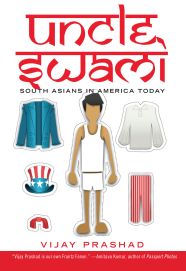 It has been nearly four years since we last attempted this. Back then, we attempted TLH’s very first book club, by examining Gurharpal Singh’s and Darshan Singh Tatla’s Sikhs in Britain: The Making of a Community. This round we are suggesting Vijay Prasad’s Uncle Swami.
It has been nearly four years since we last attempted this. Back then, we attempted TLH’s very first book club, by examining Gurharpal Singh’s and Darshan Singh Tatla’s Sikhs in Britain: The Making of a Community. This round we are suggesting Vijay Prasad’s Uncle Swami.
Although the book is aimed at issues centered around South Asian American experiences, it may be useful and enlightening to see how well they fit, shape, and interest Sikh-American experiences.
The Book:
From the jacket:
Within hours of the attacks on the World Trade Center, misdirected assaults on Sikhs and other South Asians flared in communities across the nation, serving as harbingers of a more suspicious, less discerning, and increasingly fearful worldview that would drastically change ideas of belonging and acceptance in America.
Weaving together distinct strands of recent South Asian immigration to the United States, Uncle Swami creates a richly textured discussion of a diverse and dynamic people whose identities are all too often lumped together, glossed over, or simply misunderstood. Continuing the conversation sparked by his celebrated work The Karma of Brown Folk, Prashad confronts the experience of migration across an expanse of generations and class divisions, from the birth of political activism among second-generation immigrants and the meteoric rise of South Asian American politicians in Republican circles to migrant workers, who are at the mercy of the vicissitudes of the American free market.
A powerful new indictment of cultural and racial politics in America at the dawn of the twenty-first century, Uncle Swami restores a diasporic community to its full-fledged complexity, beyond both model minorities and the specters of terrorism.
The Author:
For those interested in issues related to South Asian Americans, Professor Vijay Prasad needs little introduction. The author of The Karma of Brown Folks has been one of the foremost thinkers and scholars on the subject of identity politics and identity formation of South Asians in the Unitd States.
There has been plenty of criticism of his politics, book, and writings. All of these are pertinent and can allow for a more nuanced discussion. Still his voice is important and calls out for discussion.
The Format:
- Part 1 (Monday, 7/16) – Chapter 1 (Letter to Uncle Swami) and Chapter 2 (The Day Our Probation Ended)
- Part 2 (Monday, 7/23) – Chapter 3 (The India Lobby) and Chapter 4 (How Hindus Became Jews)
- Part 3 (Monday, 7/30) – Chapter 5 (Compulsions of Ethnicity) and Chapter 6 (The Honeycomb Comes Apart)
What to do from here:
- Order the book ASAP. Don’t delay as we are going to begin in one week.
- Invite others and help us spread the word!
- If you are going to participate, leave a short introduction here in the comment section and let us know that you plan to take part.
- Be ready in 1 week!
Living in Brooklyn, New York City as a turban-wearing Sikh, I attract plenty of negative attention from random strangers as well as the cops, which I’ve written about at length. Fortunately, I also get some love and respect from time to time as I walk or ride my bike in my neighborhood in central Brooklyn — especially from Rastafarian men who don uncut dreadlocks, often wrapped up not so differently than the gol pagh I wear, albeit usually much taller.
cops, which I’ve written about at length. Fortunately, I also get some love and respect from time to time as I walk or ride my bike in my neighborhood in central Brooklyn — especially from Rastafarian men who don uncut dreadlocks, often wrapped up not so differently than the gol pagh I wear, albeit usually much taller.
I don’t mean to make broad generalizations about a whole community, but it is worth mentioning that nearly every time I cross paths with a man who appears to be Rastafarian, without fail I get a shout out. “Respect, brother,” or “Blessings, brother,” usually accompanied by a hand or fist on his heart. Living in a neighborhood with a large Caribbean population, I encounter this regularly (and reciprocate), which is a breath of fresh air in my day-to-day life, which involves no shortage of street harassment, dirty looks, and sometimes worse. I’m grateful for this genuine, simple act of human connection and solidarity.
I’ve talked to friends about this phenomenon as well as my brother who has had similar interactions with Rastafarians in Atlanta, GA where he lives. The consensus is that the connection might stem from a recognition of a mutual prioritizing of our spirituality, and in particular, our shared spiritual connection to our hair. Indeed, Rastafarians believe in keeping hair in its natural state, and many wrap up and cover their dreadlocks. Without overstating any similarities between two very different spiritual traditions, our shared commitment to keeping our hair (not to mention a shared commitment in fighting for justice) is striking.
Our respective commitments to our hair have been similarly met with discrimination— discrimination that threatens our right to practice our religions or express our identities freely, based on racist notions of what a “professional” hairstyle is.
Last year the Jakara Movement held the first ever Bhujangi Youth Academy camp, aimed at young “at-risk” Sikh males, ages 13-17. It was a HUGE success. You can see the previous description and reflections write-up from last year.
This year the camp is happening again.
WHEN: July 15-24, 2012
WHERE: Camp Sierra (central California)
HOW TO REGISTER: Visit www.bhujangi.org
WHO TO CALL: For more information, call 1-408-905-7454 (English and Punjabi)
There will be fun activities such as paintballing, horseback riding, and sports. There will also be classes to instill a sense of pride in our collective Sikh past, but also an opportunity for reflection, emotional growth, and anger management.
The Jakara Movement is willing to work with all families of any means. As the deadline is soon approaching, we need your help and encouragement. Recommend a family member or talk to a friend if they have a young son, nephew, cousin, or brother that may be able to benefit from such an experience.
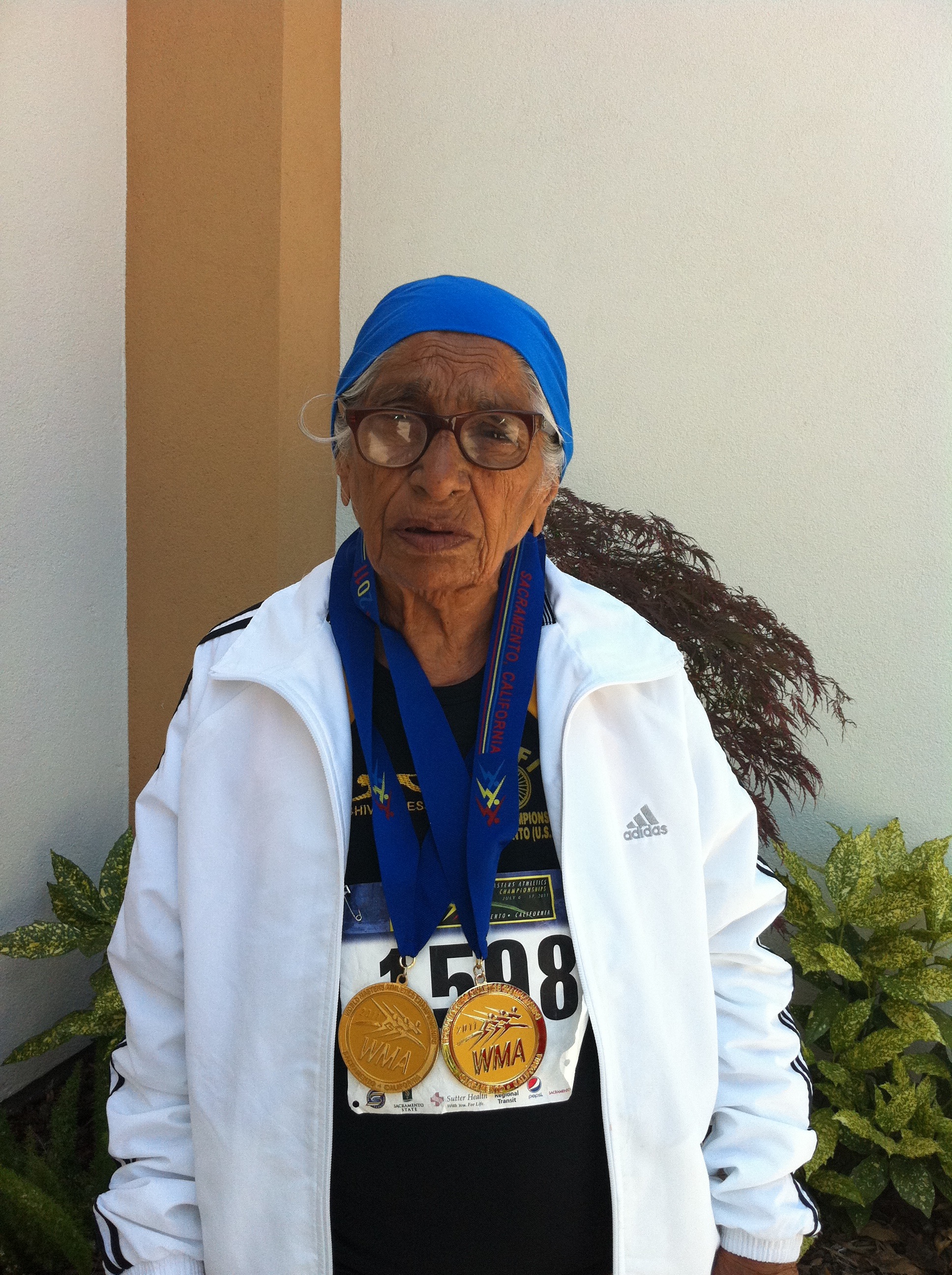 Olympic season will soon be upon us. This year the Games will be held in London. Hopefully we’ll be able to feature biographies on a number of our Sikh athletes that will be competing.
Olympic season will soon be upon us. This year the Games will be held in London. Hopefully we’ll be able to feature biographies on a number of our Sikh athletes that will be competing.
While Fauja Singh has become a celebrity in our community, he is not alone.
Man Kaur, aged 95, of Chandigarh took up running under the encouragement of her son, 72-year-old Gurdev Singh. Last year in Sacramento she received two gold medals in the 90+ age group in the 100m and 200m events. While not a marathoner, it is still an amazing achievement by an amazing woman.
“My son introduced me to athletics. I was hesitant at first, when the idea of stepping into the competitive. arena was thrown at me. But now, running has become a part of my life,” said Mann Kaur, who donned the track pants for the first time in her life last month during the 32nd national masters meet. She won a gold in both the 100m and 200m races in the 90+ age category.
Some have even argued that track and field athletics is one of the purest forms of sport, because it tests speed, strength, power and endurance. What ‘s more, athletic competition is so obviously and easily quantifiable – after all, the tape measure and the photofinish camera don’t lie. However to run the 100M and 200M at the age of 95 requires more than ‘merely’ great natural physical ability. Athletes at this age need a systematic and highly effective training programme carefully crafted to achieve physical ability to run a 200M race.
In a recent exchange with her grandson, he shared his inspiration for physical fitness coming from the example set by the Gurus. He sent the note:
Let us start living in Begumpura Sehar and enjoy Guru’s grace. This is meant to encourage youngsters.
Enjoy some more pictures and articles on Man Kaur below the fold.
My Facebook news feed and email inbox have been buzzing with discussion and calls to action to challenge racial profiling and, in particular, the NYPD’s infamous “stop and frisk” policy. I was happy to receive multiple emails today on the issue from Sikh American civil rights organizations, namely SALDEF and the Sikh Coalition. I’ve previously written about my own experiences with racial/religious profiling in NYC and the importance for us Sikhs to make the connection between the profiling we face post-9/11 and the profiling young black and Latinos have been enduring for decades.
Encouraging the NY Sikh community to attend a massive silent march this Sunday (father’s day, not coincidentally), the Sikh Coalition’s email alert stated:
In the post 9/11 era, Sikhs know all too well the consequences of racial profiling. We have felt the violence of profiling at airports; it is humiliating. It is a violation of our civil rights and it severely undermines our liberty and our safety.
As Sikhs, we have an obligation to stand for the human rights of all people. It is important that we uphold this sacred commitment as African American and Latino communities endure the type of unfair scrutiny that leads to hate crimes, workplace discrimination, school bullying, and profiling.
Caste is one of those dark secrets in our community. Some defend it as “culture”, others downplay its discriminatory effects, and some go even as far as to blame the victims of the violence itself.
Many have documented the ongoing apartheid that exists in our villages and in our minds.

Some scholars have recently looked at the issue in light of the commitment to equality bequeathed by our Gurus, but the continued existence of discriminatory practices by many Sikhs. Professor Natasha Behl sheds some light on this topic in her dissertation, titled “The Politics of Equality: Caste and Gender Paradoxes in the Sikh Community.” She began her research asking the simple questions: How do ordinary Sikhs maintain a belief in equality while also participating in caste- and gender-based discrimination? How do Scheduled Caste Sikhs and Sikh women take political action in a community that engages in discrimination, yet denies its very existence?
On the morning September 11, 2001, long time train operator Sat Hari Singh (aka Kevin Harrington) was driving the 4 train towards lower  Manhattan when news of the attacks came in. He quickly directed the train in reverse, leading all his morning commuters to safety. The Metropolitan Transit Authority (MTA) later honored him as a hero of 9/11 for his efforts.
Manhattan when news of the attacks came in. He quickly directed the train in reverse, leading all his morning commuters to safety. The Metropolitan Transit Authority (MTA) later honored him as a hero of 9/11 for his efforts.
Soon thereafter, Singh and other Sikh transit workers as well as hijab-wearing Muslim transit workers were transferred to new jobs hidden from the public eye by the MTA, as long as they chose to wear their articles of faith, which apparently looked a little too “suspicious” in the aftermath of 9/11. After an uproar from the Sikh and Muslim communities as well as countless others concerned with civil rights and religious freedom, they were reinstated to their original jobs but with a caveat: their turbans and hijabs were to don the MTA logo.
“They called me a ‘hero of 9/11.’ I didn’t have a corporate logo on my turban on 9/11,” Sat Hari Singh said. “This policy made no sense. It was driven by fear.”

“But, when you have a beard, a mustache, it’s like a mask. You can’t see the person’s face. It’s hidden.”
As disagreeable as the words sounded, my friend’s tone was very gentle and civil. It was almost as if he was asking me the question: why bother?
I was a nine-year-old Sikh boy with a little mustache fuzz and a patka (a Sikh boy’s headcovering), speaking with the clean-shaven teenaged Hindu boy next door whom I befriended on this extended trip to India. I would often play games with his younger brother, but with this older brother, our interaction usually took the form of conversations about our different cultures and religions.
His point about hair left me somewhat at a loss. I remember his facial expression after he made his statement – curiously waiting for a response that I would not have.
Later that evening, I presented this argument to my father. “He said people can’t see our true faces because of the hair on our face.”
My father didn’t take a second to respond. “This is my face”, he said very matter-of-factly, “this is how a man’s face naturally looks.”
Tomorrow, May 1st, is International Workers Day and may very well be one of the largest days of mass action and protest we’ve seen in the North  America in some time. Also known as May Day, the day has a long and rich history of working people courageously fighting for dignity and justice.
America in some time. Also known as May Day, the day has a long and rich history of working people courageously fighting for dignity and justice.
May 1st is the original “Labor Day” in the US. On May 1, 1886, 100,000 workers went on strike in Chicago demanding an eight-hour work day. They were met with violent repression from the police who killed four and injured many more. A massive rally against police brutality was organized in the coming days at Haymarket Square where violence escalated. Martial law was declared in Chicago, and police arrested hundreds of activists. The “Chicago Eight” were arrested and convicted solely because of their political beliefs. Seven were sentenced to death, and four were eventually hanged. Hanged for being freedom-fighters. Sound familiar?
In more recent years, May Day has become a mass day of action for immigrant workers rights here in the United States as well. In 2006, literally millions of immigrants and allies took to the streets in the midst of draconian anti-immigrant legislation working its way through the halls of Congress in the first “Day Without Immigrants.”
90 percent of truckers did not show up for work at the Port of Los Angeles, 27 percent of students did not show up for school. In the Central and Imperial Valleys, farm tools lay idle in the biggest agricultural work stoppage in California’s history. Corporations like Perdue, Cargill, and Swift preemptively gave workers the day off in an effort to save face and minimize production losses. In New York, whole neighborhoods closed as Korean and Latino business shuttered their windows. (see: http://maydaynyc.org/history)
Co-blogged by JooKay Singh and Jodha
Our fellow langa(w)r-iter – Navdeep Singh highlighted the dominant pop genre of Punjabi music that celebrates nihilism and suicide through political complicity and destitution. Today, we highlight another form of music that has reached new heights in the shadow of the Shaheed.
UK-based producer Tru-Skool’s latest dharmic-track, ‘Beant Satwant Da Badla‘, which will be part of the 10th Shaheedi Immortality album, has topped the BBC Official Asian Download Chart this weekend gone. This isn’t the first time one of the Shaheedi Immorality tracks has been on the BBC Asian Network playlist (Tigerstyle’s Son of a Sardar and Jhooldey Kesri Chande have previously been played by Bobby Friction, Nihal & Adil Ray amongst others), and some would argue this track isn’t pushing the envelope musically or lyrically, since the Immortal Production (IP) collective have been putting out similar tracks for the past 10 years. So, what’s different, and is this a flash-in-the-pan riding on the back of kesri lehar, or is there more?

Previous IP tracks were given play time on the BBC courtesy of their association with Tigerstyle, who are well respected in the UK as innovative producers, rather than for the tracks themselves; diligent listeners will have noted that the songs were also edited to remove ‘controversial’ lyrics. In Jhooldey Kesri Chandey, for example, the first thirty seconds or so contained part of a speech by Baba Jarnail Singh Bhindrawale, and was removed entirely. Beant Satwant Da Badla, by contrast, has received air time by virtue of being the most officially download ‘asian’ track last week in the UK and was played unedited.
The last few weeks, Sikhs around the world have been celebrating the anniversary of the birth of the Khalsa. I intended to do a Vaisakhi post earlier, but travels have kept me from sitting down and writing down some of my reflections until now. I have found myself in small and medium-sized towns throughout the midwestern and southern United States these last two weeks, feeling my outward identity as a Sikh projecting more conspicuously than ever.
NYC's Annual Sikh Day Parade
Consequently, I began thinking a lot about the significance of the Bana that Guru Gobind Singh gave us in 1699. What a fearless, defiant act of revolutionary love it was for Sikhs to wear their identity so visibly in a time when they faced such severe violent repression. A time when it was dangerous to be a Sikh, where being a Sikh meant you were an enemy of the empire, a threat, where there was a price on your head, a target on your back. Yet rather than blending into Indian society and building its movement for sovereignty and justice subversively, the Khalsa wore its identity loudly and proudly so everyone knew very clearly who a Sikh was.
I think about this today as more and more of cut our hair because we can’t take the torment of bullying in schools any more or trim our beards so we look more “professional” at our corporate jobs. Bana seems to have lost its appeal to many, for an ever-expanding list of reasons. Looking back at our history, it never has been easy. And perhaps that is part of the point. I wouldn’t wish the traumatic experience of racist harassment on anyone, but I know very well that I wouldn’t be the person I am today without all the struggles I have dealt with because of my Sikh identity.
Guest blogged by Sharandeep Singh
Sidak, run by Sikh Research Institiute, is a diamond among jewels. It is one program, which after attending, completely changes your outlook on Sikhi, and life – I speak unequivocally when I say there is nothing else like it!
As a graduate of Sidak 2011, I want to share my experience to motivate and inspire whoever reads this to attend, so that you too can join the ranks of people who have enriched and developed their understanding of Sikh culture and history.
The annual retreat, based in Texas may seem daunting, particularly for me—it being my first trip to the US—I arrived with a feeling of trepidation, not fully aware what awaited me in the two weeks ahead. Suffice to say, I was not disappointed.
UPDATED: All of a sudden I remembered a video from KPS Gill. Readers on this site are aware of this murderous sadist, but maybe it is still worthwhile to juxtapose his lies with the findings announced this week.
All of our attention shifted towards Punjab last week. There was some interesting developments early this week. One is that Voices for Freedom, a non-government organization, based out of Punjab filed a public interest litigation (PIL) petition against the Sukhbir Badal’s appointee for Director General of Police (DGP) Sumedh Saini. Saini is a well-known human rights abusers and was involved in the many murders, “disappearances”, and torture during the 1980s and 1990s. From the media reports, while the petition may not go far, hopefully it does center some more attention on just the type of thugs that the the Badal Mafia appoints.
Another note from Punjab came yesterday when the National Human Rights Commission (NHRC) of India announced that they would pay Rs. 175,000 (about $3,500) to 1,500 families in the Amritsar district for the murder of their sons. Of course there is no culpability, just an attempt to buy silence. Well-known human rights lawyer Navkiran Singh of Chandigarh has rightly state:
It is too little too late and why only from Amritsar District? Khalra gave example of Amritsar district, but wanted an inquiry for the whole of Punjab. Imagine we had to pursue the matter in the NHRC for 17 years for this little justice.
UPDATE: I just wanted again to stress the lies that KPS Gill has restated for years. See this interview with an Australian journalist, when asked point-blank about the case of illegal cremations, KPS Gill lies without hesitation. Contrast this where the NHRC admits it occurred and even pays out money to families, though without casting any blame or responsibility. I have yet to see a true Indian journalist expose KPS Gill for his lies. Unfortunately they continue to lionize him, assuring that impunity continues – whether in Punjab, Delhi, Gujarat, Kashmir, and many other regions of South Asia.

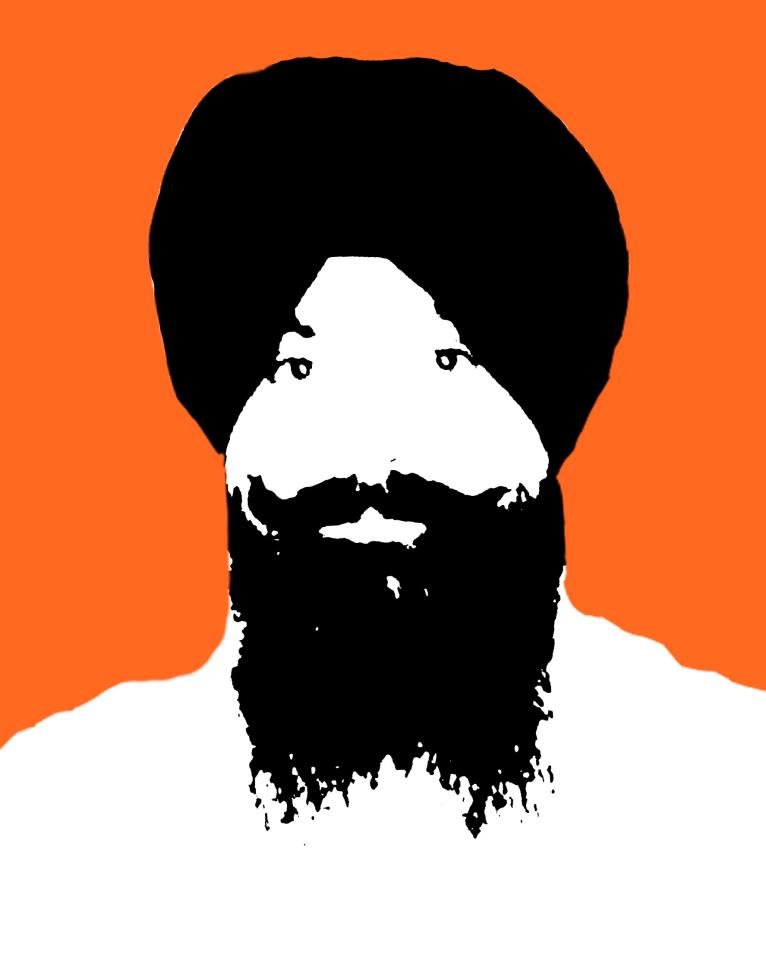 News has started to trickle on this day that Bhai Balwant Singh Rajoana was initially scheduled to be hung. Due to the stay ordered by President Patil of India, there is an indefinite delay.
News has started to trickle on this day that Bhai Balwant Singh Rajoana was initially scheduled to be hung. Due to the stay ordered by President Patil of India, there is an indefinite delay.
On Gurdaspur
News media are reporting the Punjab Police has suspended SSP (Senior Superintendent of Police) of Gurdaspur, Varinder Singh, for the shooting and has registered a case against the DSP (Deputy Superintendent of Police). This has only occurred due to the pressure of the sangat, especially that of Jaspal Singh’s family, who have refused to perform the cremation until the arrest of the Shiv Sainiks and police officials. According to some reports via Facebook (so read with caution) heads of the Sant Samaj coalition along with Jathedar Gurbachan Singh had started a dharna along with Jaspal Singh’s family calling for the police officers that ordered the firing to be punished. Badal was against this action by Gurbachan Singh, but Gurbachan Singh and heads of the Sant Samaj threatened to call for a bandh in Gurdaspur, if action was not taken. Badal then conceded to the request and brought about the orders against some police officers, though I have not heard anything about charges or FIRs against the Shiv Sainiks. If this is true, expect Prakash Badal to REIGN in his appointee – Gurbachan Singh – and for him to better play the role of a puppet. Gurbachan Singh knows who pulls his strings and this act of independence will be punished. Expect more pro-Badal quotes and a calling for an end to all events. We would do well to begin ignoring him.
Other news in Punjab
Members of the Sikh Channel were detained by Punjab Police for four hours. This is a serious blow against freedom of the press. While we are excited that they have been released, we hope that UK Sikhs put full pressure on the UK Foreign Office to reprimand the Indian Government on such matters. When UK journalists were captured in Iraq, Libya, and other war-zones, the Foreign Office helped put pressure for their release. We would expect them to lodge a complaint against Indian officials in this matter as well. If someone from the UK is drafting a letter and would like to share, please send us the link.
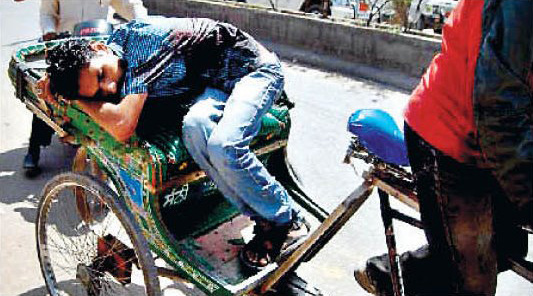
It has now been confirmed by Navkiran Singh, well-known human rights advocate and a lawyer for Bhai Balwant Singh Rajoana, that Ranjeet Singh is in critical condition, but is alive. Our apologies for the incorrect information, but one can understand that with information from Punjab being limited, details are being lost.
Yesterday I wrote about Jaspal Singh, whose loss became well-circulated, due to social media and the outstanding work of Sangat TV and the Sikh Channel.
A very young Ranjeet Singh Mandher, only 16 years old, son of Jaswinder Singh, from village Pandher (Mukerian road) was shot by police. With the heavy police fire, no one came to help him. The veer had to take his own rickshaw to the hospital. From there the hospital in Gurdaspur sent him to Amritsar, where he is in stable condition. I am including the only picture I have received of the youth. If others can provide more information about this young student, please do send it to us.
In other news, Bibi Kamaljeet Kaur was not allowed to meet the family of Jaspal Singh in Gurdaspur. She was stopped on orders from the government. Such is the government of Badal, where police offers open fire and underlings can only be suspended. It only follows the logic of one that would promote a murderer as Sumedh Saini as DGP and give coveted MLA seats to the wife of a butcher like Izhar Alam. The Punjab Government fears Bibi Kamaldeep Kaur and are trying to limit her movement. At present, she is still giving interviews on Sangat TV and other media outlets. Sangat TV has a livestream that can be seen here as does the Sikh Channel, which can be seen here.
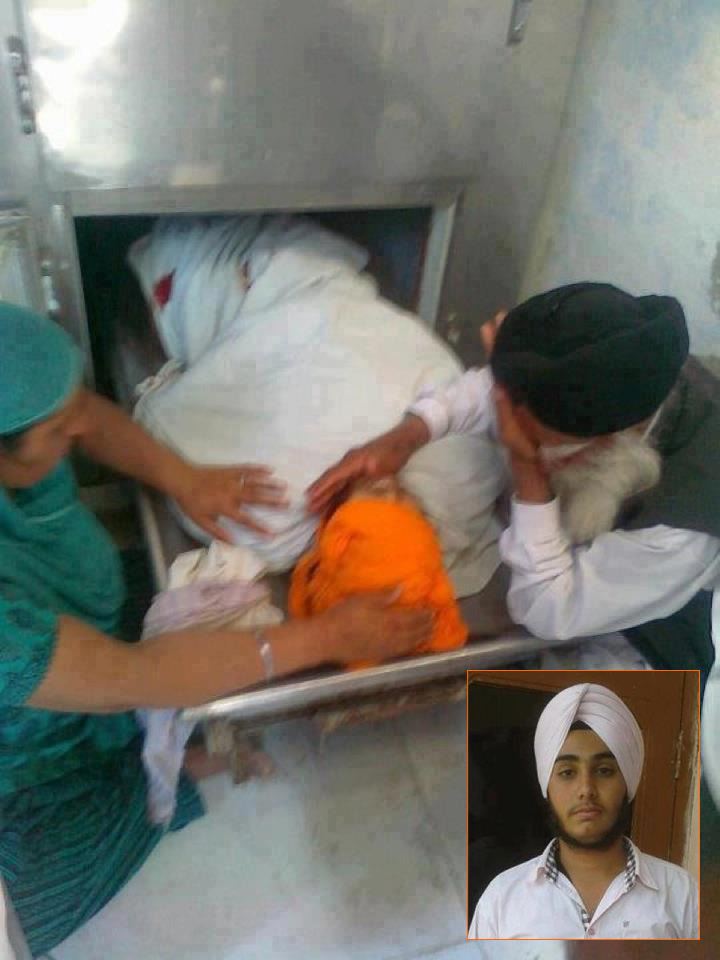 Details are murky, so to do a full analysis at this point is difficult. Right now, we stand to document the events. According to numerous reports, Shiv Sena from mainly Gujarat and Maharastra are entering Punjab. Gurdaspur has been a long-time stronghold of the Shiv Sena as well. Those that are arriving seem to be arguing that if Sikhs could shut down the state yesterday that they would be able to do it today. Read here from our live-blogger from Amritsar that shares much of the same information.
Details are murky, so to do a full analysis at this point is difficult. Right now, we stand to document the events. According to numerous reports, Shiv Sena from mainly Gujarat and Maharastra are entering Punjab. Gurdaspur has been a long-time stronghold of the Shiv Sena as well. Those that are arriving seem to be arguing that if Sikhs could shut down the state yesterday that they would be able to do it today. Read here from our live-blogger from Amritsar that shares much of the same information.
At Gurdaspur this morning, Jaspal Singh, a young 18 year old Sikh boy from Chor Sidhvan village, was killed by police firing. Below the tab you can find an eye-witness video of how the Sumedh Saini’s rogue police has differential treatment towards the Sikh youth and the out-of-state-arriving Shiv Sena. Remember it was Sukhbir Badal, the so-called heir apparent, that personally chose this known human rights abuser to be the Director General of Police. Murders are lauded in Punjab. It was this same Badal that ran for election the wife of the one of the worst butchers of Punjab – Farzana Alam. Farzana’s husband, Izhar Alam, ran his own crack team, called the “Alam Sena” that would give criminals unlimited powers to run wild. His own atrocities are stunning. Eye witness accounts describe his atrocities on women and his summary executions. These are our new “leaders” of Punjab installed by Badal

News of the Punjab bandh have overwhelmingly described it as a success. The community is in a wait-and-see mode. Unfortunately I feel that the political machine is already manipulating the system to create disenchantment and disillusion.
Some are claiming that the “stay” against execution should be read as a victory. First off this goes AGAINST the wishes of Bhai Balwant Singh Rajoana himself. He asked us NOT to do this. I, too, disagreed with this being read as a victory and described it in a previous post. A friend in Punjab expressed the same sentiment BEFORE the announcement as well:
they won’t hang Rajoana. they’ll commute it to life and cut off our legs at the knees by doing so, and by ‘our’ i mean the panth and Rajoana’s qurbani that landed him in jail to begin with and his wish to kiss the noose and go out with a jakara. [link]
A beautiful and moving video called “The Salutation” gives the reason for why all of us are united in saluting Bhai Balwant Singh Rajoana and why he represents a spirit that will not die – the spirit of the Khalsa and its commitment towards ensaaf/adalat (justice).
UPDATE: In accordance to Badal’s great game, he allowed for the bandh, but won’t let this moment fall from his bony and corrupt grasp. He has already imprisoned all those that may possibly post a challenge to him. Daljit Singh Bittu and others are being imprisoned throughout Punjab as we type this post. Just as Bhai Balwant Singh Rajoana said, we are getting played by these blue-turban wearers.
Signs of victories and congratulations are being issued by Sikhs on social media. The question was not ‘if’ a stay would be announced, but ‘when.’ This is the game….
It was always going to occur. More than even the Central Govt, Badal fears the Shaheed. The Shaheed has convictions, where he has none. This is how Badal does stage management of the Sikhs – allow the kettle to boil, but not too much. Then show the Central Government that only you are the mastermind that can “control” the Sikhs, cementing your importance to them.
How to break this? Up the ante. This is my humble suggestion – Bhai Balwant Singh Rajoana has showed his convictions. While we (against his wishes) circulated petitions and asked for clemency, he only asked for justice. The stage is set. If he were to begin a hunger strike for justice asking for the release of all political prisoners, the Government of India could not accede. The Punjab Government would be brought to its knees if during this hunger strike, the Sikhs converged upon Patiala.
Let us not pat our backs about the “stay.” We are being manipulated before our eyes. We have seen our potential (the amazing pictures of kesri flags throughout Punjab and even at India Gate attest to this). However, the march must continue….
Guest blogged by Preeti Kaur
For Bhai Balwant Singh Rajoana
For everyone who flies the kesri jhaanda today
ZINDABAAD TO THE KESRI FLAG WAVING ACROSS MY HEART
ZINDABAAD TO MARCH 31, 2012
ZINDABAAD TO THE EYES
ZINDABAAD TO THE LUNGS
ZINDABAAD TO THE WRIST WHICH WEARS THE KARA TO REMAIN SHACKLED TO THE SKY
ZINDABAAD TO THE ROPE
ZINDABAAD TO THE TATI TAVI
ZINDABAAD TO THE BELLS RINGING
ZINDABAAD TO THE BRIDGE
ZINDABAAD TO THE LAMP
ZINDABAAD TO THE KIRPAN DIPPED IN INK
ZINDABAAD TO THE CHILDREN OF THE FIELDS RUNNING AWAY RUNNING TOWARD
ZINDABAAD TO THE DISAPPEARED WE REMEMBER
ZINDABAAD TO THE DISAPPEARED WE FORGOT
ZINDABAAD TO THE ASHES WHICH COULD NOT TRAVEL TO KIRATPUR SAHIB
